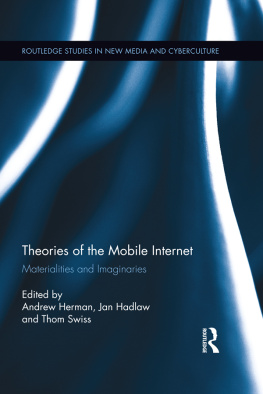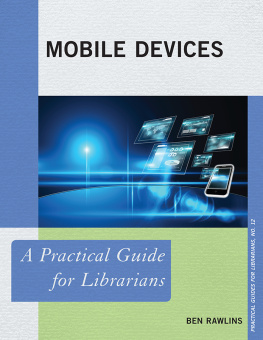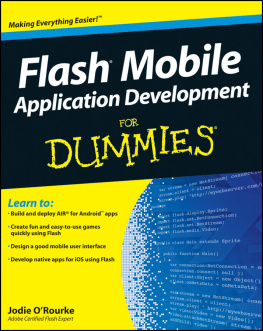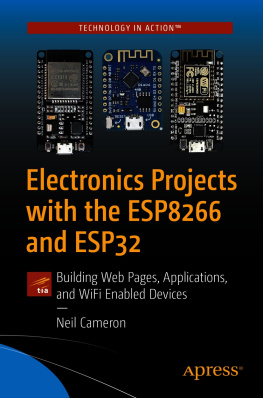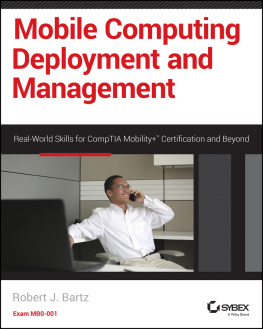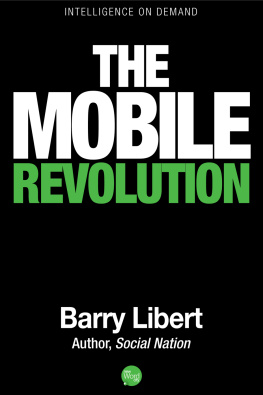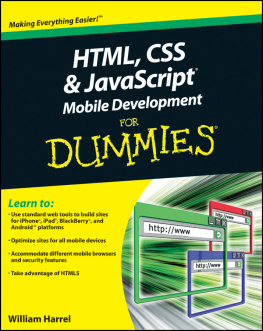As the Internet enters its third decade as a popular medium, one of the most important aspects of its evolution has been the transformation of the digital way of life from a state of being wired to that of being wireless and mobile. While the wireless Internet refers to the increasing diffusion of Wi-Fi connectivity (and its more powerful successors), the mobile Internet entails wireless connectivity and more. The technological advancements in platforms for the latter are driving the expansion of the provision of the former.
The mobile Internet is manifested in the proliferation of practices mediated through 3G (third generation) and IMT-Advanced (commonly called 4G or fourth generation) data transfer networks that are accessed through mobile communication devices ranging from smartphones (such as the iPhone or the many Android OSbased devices) to a wide array of tablet devices (such as the iPad) through which Internet experiences truly become portable across a multiplicity of spaces and places of everyday life. Until the development of these devices, mobile communication was more or less comprised of untethered telephony with the added (and originally unintended) benefit of SMS texting (Goggin 2006). As we know, 3G and 4G devices embody the convergence of new multimedia forms, applications and platforms that extend the possibilities of mobile communication far beyond talking and texting. Indeed mobile Internet usersparticularly those who accessing video and gaming contentare increasingly consuming the vast majority of wireless bandwidth.
While there has been a tremendous flowering of scholarly work on mobile telephony and communication over the past five years, Internet scholars have been slower to consider the growing mobility of the Internet. This aporia in critical Internet studies is problematic for, as Mimi Ito has argued, the development of the mobile Internet demands a set of engagements at various methodological and theoretical points that differ substantially from Internet study (2005, 5). Indeed, from our perspective, making sense of the mobile Internet necessitates the development of a unique analytic that closes the gap between Internet scholarship on the one hand and scholarship on mobile communication on the other.
Mobilities and Assemblages
This book takes up the theoretical and conceptual challenge that Ito positedbut did not elaborateby proposing an approach that focuses on how the mobile Internet shapes and is shaped by the emergence of what Mimi Sheller and John Urry term the new mobilities paradigm (2007, emphasis added). This paradigm emphasizes multiple and linked registers of mobility which include (but are not limited to) the physical movement of travel and migration, the symbolic movement of mediated communication and the circulation of cultures, and the virtual movement in and through digitized spaces (Urry 2007; Elliott and Urry 2010, Cresswell 2010). All three registers, Sheller and Urry argue, converge in the practices of mobile telephony which enable the capacity of interacting and communicating on the move, of being in a sense present while apparently absent within the same spatio-temporal coordinates (2007, 207). Accordingly, this volume seeks to address two apposite issues: First, how do mobile communications and the mobile Internet create zones of connectivity that are fluid, transportable, and meaningful? Second, what are the structures of immobility (i.e., server farms, wireless towers, Wi-Fi hotspots, fiber optics of Internet backbones, and so on) that also serve to constitute the mobile Internet?
To address these questions, authors in this book construct the subject of the mobile Internet as an assemblage of multidimensional socio-technical practices in which the materialities and imaginaries of manifold technologies of mobile communications converge. At its most abstract level in terms of social theory, assemblage thinking allows us to foreground ongoing processes of composition across and through different human and non-human actants, a perspective that is absolutely crucial to understanding the mobile Internet as a contingent totality (Anderson et al. 2012, 172). Digital gaming scholar T. L. Taylor describes the concept of the assemblagederived from Gilles Deleuze and Flix Guattari (1987)as an alternative heuristic for understanding complex socio-technical systems: the notion of assemblage is one way to help us understand the range of actors (system, technologies, player, body, community, company, legal structures, etc.), concepts, practices, and relations (Taylor 2009, 332). Taylor is noting here the heterogeneity of the assemblage as a network of imaginary and material elements, elements that are not randomly connected but are structured with a particular vector of force and effectivity in time and space. Jennifer Slack and the author of a final chapter in this volume, Macgregor Wise (2005), render this heuristic more nuanced by distinguishing between articulation and assemblage. A socio-technological articulation refers to how an elemental ensemble of objects, social practices, symbolic representations, experiences and affects are drawn together in a specific and contingent unity. An assemblage is a socio-technical articulation that is, to use a Deleuzian metaphor, constellated into a particular dynamic form that envelops and gives form to spatio-temporal territorities (Slack and Wise 2005, 128).
From our perspective, the concept of assemblages is as important methodologically as it is ontologically. John Law, in After Method , emphasizes the ad hoc and active meaning of the concept. An assemblage is not a fixed arrangement or state of affairs, but rather an open-ended, uncertain and hesitant process (2004, 41). Assemblages are both objects and activities. The mobile Internet is neither one nor the other, but rather the event of their reciprocal configuration (Taylor 2009, 332). The notion of the assemblage makes understanding the mobile Internet in situ whether that situation be physical, symbolic or virtualpossible. The materialities and imaginaries of the mobile Internet are fluid and dynamic, and thus their apprehension and analysis must be likewise methodologically open-ended and plural.
Materialities and Imaginaries
The assemblages of the mobile Internet are comprised of articulations of materialities and imaginaries. The term materialities invokes two traditions of materialist analysis, both of which have long, storied and influential purchase in communication/cultural/media studies. The first derives from the neo- and autonomist Marxist materialism of the political economy of communication (Mosco 1996; Dyer-Witheford 1999; Dyer-Witheford and de Peuter 2009). From this perspective, the centrality of the mobile Internet in constructing a distinctive form of digital and/or informational capitalism is paramount. If, as Benedict Anderson (2006) famously argued, the apparatus of print technologies ushered in the era of print capitalism, is it possible or fruitful to speak of the emergence of smartphone or notepad capitalism? What are the arrays of social relations of power and exploitationembodied in markets and their constituent social practicesthat characterize this new form of capitalism as a distinctive social formation? What are the circuits of interactivitybetween smartphone and user, between telecoms and regulatory agencies, between applications and software designers, between Google or Apple and regimes of intellectual property and so onthat comprise the empire of network informational capitalism (Kline, Dyer-Witheford and de Peuter 2003)?
The second tradition derives from the materialism rooted in the well-known medium theory of Innis and McLuhan (Meyrowitz 1994; Deibert 1997), which is in turn a major inspiration for the contemporary media materialism of Friedrich Kittler (1999; Gane 2005; Parikka 2012; Pels et al. 2002). This evolving and disparate body of work takes seriously the idea that the material forms of mobile communicationfrom the digital architecture of 3G networks to the design of the devices themselvesare just as important as the meaning of the messages they convey and carry. How do the materialities of the mobile Internet manifest themselves in the everyday encounters of users and their devices? To what extent does the design of haptic interfaces of mobile device construct or determine the mobile experience? Concern with such materialities may also entail a concern with their corporealities. Pushed to the limit, the materialities of the mobile Internet encompass the connectivities that the ITU has called the emergent Internet of Things (2005), where H2H (human-to-human) communication is increasingly supplemented by H2T (human-to-things) and T2T (things-to-things) (Varnelis and Friedberg 2007, 37). The important of the emergence of the Internet of Things to issues of mobility is underscored by the fact that wireless bandwidth usage will be increasingly dominated by T2T communication (Lawson 2014).

